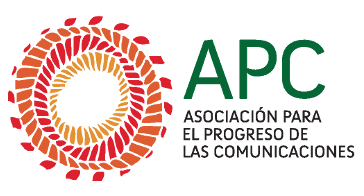Publicado el
Actualizado por última vez en
South Asia-based BytesForAll‘s newest member, Nalaka Gunawardene of Sri Lanka, who is a veteran journalist and observer of the “ICT4D” (information and communication technologies for development) field, was there at the launch of the Global Alliance for ICT and Development (UN-GAID) in mid June 2006 at Kuala Lumpur, Malaysia. He wonders whether the newly-formed UN-GAID will manage to connect disparate initiatives, enhancing or multiplying their impact? Or might it evolve into another self-serving bureaucracy, competing with everyone else for limited resources, media attention and people’s time?
The jargon-totting development community and the gadget-happy technologists are both fond of coining and bandying acronyms. Few outside their circles can figure out what these multi-letter assortments stand for.
As these mind bogglers go, the just launched UN-GAID is a double-whammy: it’s an acronym within an acronym. It stands for United Nations Global Alliance for ICT and Development. And ICT itself is short-hand for ‘information and communication technologies’ — gadgets and processes that help move information quickly and efficiently, allowing communications over vast distances.
The new alliance, inaugurated this week with an international meeting in Kuala Lumpur, Malaysia, is a special initiative by the UN Secretary General. It is meant to link up existing
efforts to harness ICTs — ranging from fixed phones, radio and television to mobile phones, Internet and satellite communication — to reduce poverty and improve lives everywhere. (Photo alongside shows the Malaysian capital KL. Photo courtesy auburn492’s photostream from Flickr.com)
This shared vision of mobilising gadgets and gizmos to solve real world problems has given rise to a development subset in recent years known as ICT for development. Inevitably, it
inspired the acronym ICT4D.
Writing a foreword to a UNDP Human Development Report on ICTs in Asia, Sir Arthur C Clarke — inventor of the communications satellite — suggested a more catchy phrase: geek to meek.
Whatever the label, there is no argument on the need to link up thousands of isolated initiatives littered across the global South — if only to prevent the reinvention of the wheel that seems to happen too often.
But I am not sure if another UN technocracy — with its multiple layers of governance and stuck in inter-governmental diplomatic niceties — is the right answer. Already, a multitude of UN agencies are trying to engage ICTs to help generate jobs and incomes, deliver education and healthcare, and pursue other goals.
UNESCO, UNDP, ITU, FAO and the UN’s regional commissions all have ICT programmes of their own. Not to mention most key development donors and major multilateral banks. Then there is the UN ICT Task Force, launched in 2001 with a mandate very similar to UN-GAID’s (which might well succeed the Task Force now).
Civil society had realised the ICTs’ problem solving potential years before these large agencies. NGOs, research institutes and activist groups were pathfinders in taking the
geeks’ toys to the meek. The Association of Progressive Communicators (APC), for example, linked up social activists and groups by email long before commercial internet service
providers came on the scene. More recently, the ICT industry has also started making social investments. At the UN-convened World Summit on the Information Society (WSIS) in
2003-2005, these sectors and players shared a common platform — but not necessarily the same vision and mission.
Can UN-GAID connect these disparate initiatives, enhancing or multiplying their impact? Or might it evolve into another self-serving bureaucracy, competing with everyone else for
limited resources, media attention and people’s time?
We just have to wait and see. We should give it six months to prove its worth. In the rapidly changing ICT world, that’s a long time.
The initial signs are not very promising.
The Kuala Lumpur meeting opened with a high-powered panel on national ICT strategies for achieving Millennium Development Goals — the globally agreed blueprint for reducing poverty
and improving lives by 2015. Panel remarks illustrated the development community’s current obsession with putting computers in classrooms and connecting rural areas to the Internet.
It took Dr Abdul Wahid Khan, Assistant Director General of UNESCO, to bring us down to earth. "The ‘C’ in ICT stands for communication, not computers," he reminded everyone. "As far as marginalised communities are concerned, it doesn’t matter what tool or gadget is used. They need to access information and be able to express themselves."
Khan said the only personal ICT tool that most marginalised groups can afford to own individually is the humble transistor radio. Yet most ICT for development projects
ignore this pervasive ICT.
"Don’t transplant technologies just for the sake of counting villages or schools as being connected," Khan urged. "We must invest more resources in locally generated and relevant
content for radio and television that already have vast outreach."
This point had already been reiterated at the World Electronic Media Forum that rallied the world’s broadcasters at WSIS in both Geneva and Tunis. As their declaration noted: "The future is not only ‘on-line’ …. Especially for the developing countries, traditional radio and television will continue to be the most effective way of delivering high quality information on, for example, healthcare and education, of combating illiteracy, of debating issues of
general interest and of promoting a culture of peace."
Analog or digital. Wired or wireless. These finer distinctions hardly matter to the large sections of the human family who are currently not part of the global conversation.
If they are serious about strategic use of ICTs, development practitioners need to take note of this big picture. Tinkering with a few digital projects (that often stay ‘forever pilots’) will not popularise ICTs or solve problems.
Using ICTs for development is, in fact, a subset within the broader area of integrating ICTs in our societies. No amount of legislation, policy formulation and slick advertising can accomplish this. ICTs have to prove their worth, and be accepted as adding value to living and working conditions of people.
It doesn’t take computer science to assess the public utility and relevance of any ICT. We can begin by asking a few simple questions.
Does the new technology or process:
* Put more food on our tables?
* Add more money in our pockets?
* Make interfacing with government easier?
* Save time and effort involved in commuting?
* Support cultural and personal needs of individuals and groups?
* Finally, is it affordable, user-friendly and widely available, with minimum entry level barriers?
One ICT that has rapidly gained public acceptance is the mobile phone. In most parts of Asia, mobile phones cut across social, class and economic divides. From being an expensive,
elitist gadget when first introduced, it has become an everyday utility that people use for a wide range of purposes. Costs have come down as initial monopolies crumbled.
Interestingly, not a single donor or UN agency invested ‘development aid’ in mobile phones — it was a pure market phenomenon.
It is mostly aid money that sustains a large number of ‘small-is-beautiful’ type ICT4D initiatives across Africa, Asia Pacific and Latin America. The tele-centre fever sweeping the developing world is the latest manifestation. Tax payers in the North keep these numerous projects on life
support, believing the hype that they help the Southern poor.
But do they, really?
Many such projects — such as Sri Lanka’s much-touted Kotmale internet browsing by radio — do more harm than good by distracting funding agencies, distorting investment priorities and creating an illusion of accomplishment. They are artificial ‘oases’ amidst ‘deserts of depravation’ that cry out to be irrigated.
For sure, there is a certain seductive allure in images of rural school children playing with a computer, a Buddhist monk using a mobile phone, or tribal people trying out a palm-top. These make the development community believe that they are fixing the world’s ills with gadgets. Besides, they look good on printed posters and brochures that routinely flood every international meeting, digital media notwithstanding.
UN-GAID faces a clear choice: indulge in more of the same to keep everyone happy, but achieve little — or ask tough questions on ICTs’ value addition, and drive strategic thinking and smart application. As the new kid on the block, UN-GAIDS should not hesitate to call out that the long-standing ICT4D ‘Emperors’ have no clothes on.
But first, it must dress up quickly and sufficiently.
* * * * * *
Nalaka Gunawardene is writer on ICT and development issues, and is a contributing author of Digital Review of Asia Pacific. He heads TVE Asia Pacific, a regional organisation that uses television, video and new media for development education. The views expressed in this essay are his own. He can be reached at:


